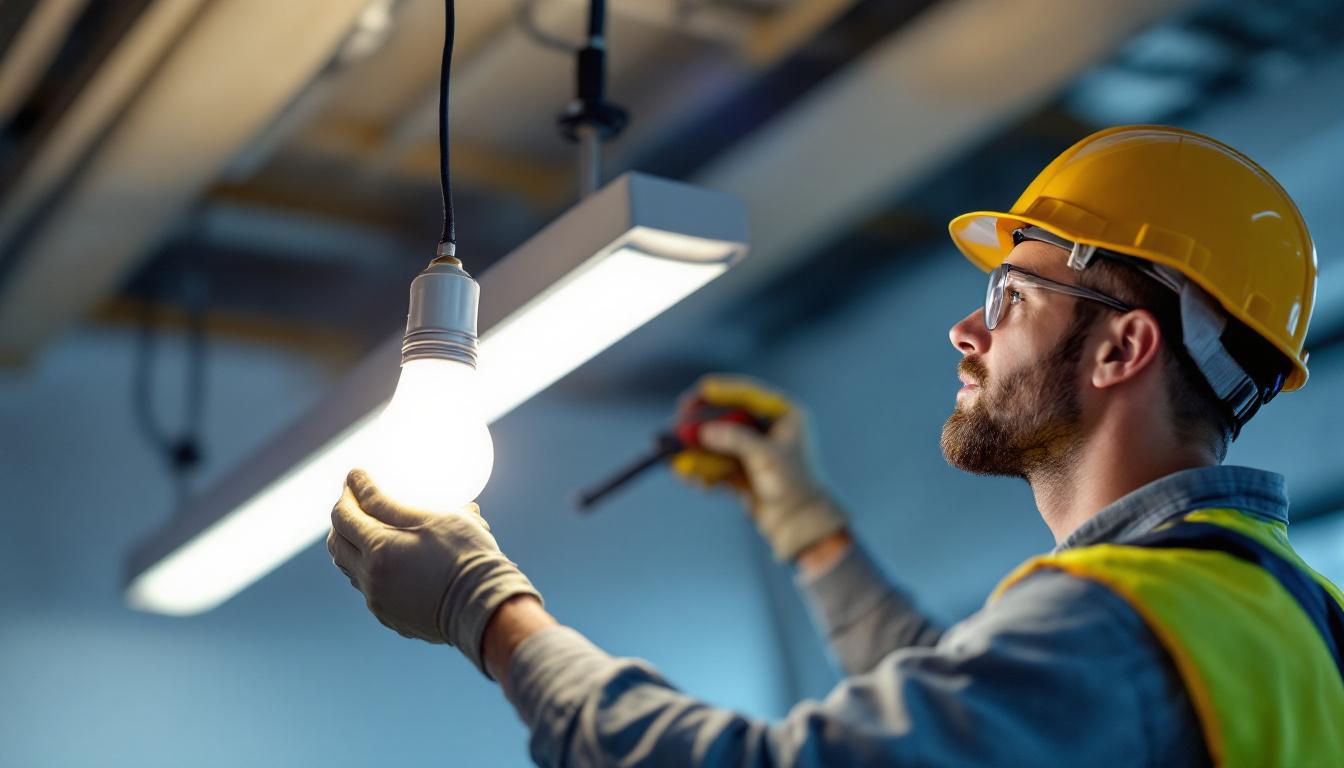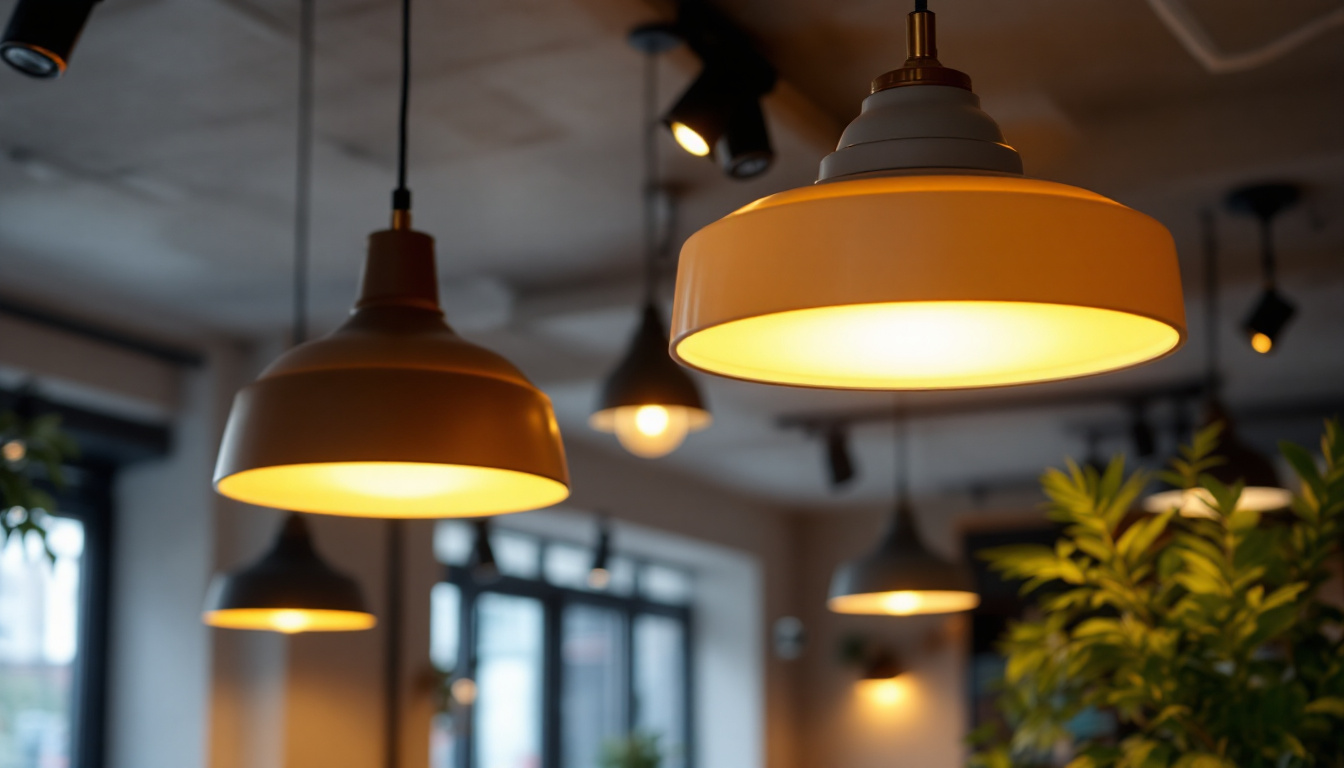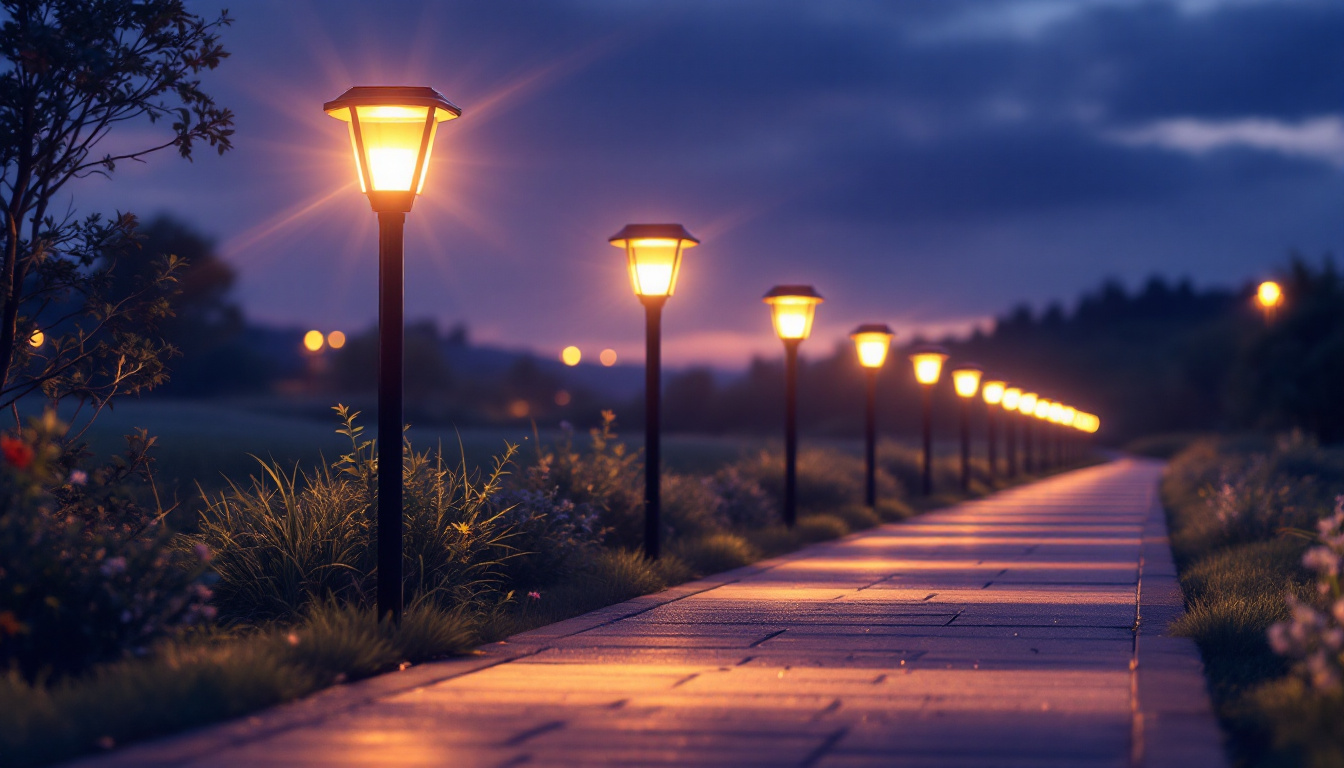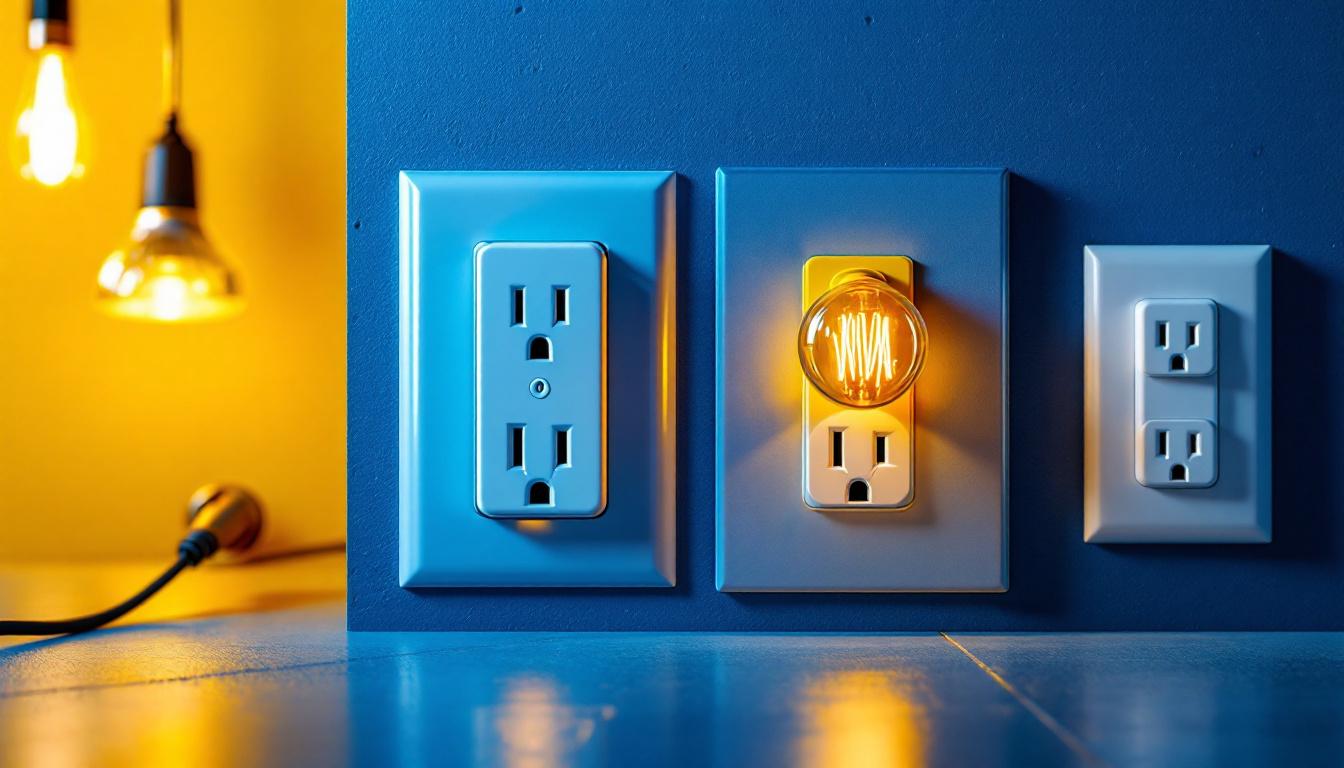
Fluorescent bulbs have long been a staple in commercial and residential lighting due to their energy efficiency and longevity. For lighting contractors, understanding the installation process and the underlying science can enhance the quality of service provided to clients. This guide delves into the intricacies of installing fluorescent bulbs, offering insights that can elevate the expertise of any lighting professional.
Before diving into the installation process, it’s essential to grasp how fluorescent bulbs operate. Unlike incandescent bulbs that generate light through heat, fluorescent bulbs utilize a different mechanism that involves gas and phosphor coating. This fundamental difference not only affects how they produce light but also influences their energy consumption and overall efficiency.
Fluorescent bulbs contain a small amount of mercury vapor and an inert gas. When electricity flows through the bulb, it excites the mercury vapor, producing ultraviolet light. This ultraviolet light then interacts with the phosphor coating on the inside of the bulb, resulting in visible light. This process is known as fluorescence, which is where the name of the bulb originates. The efficiency of this process is remarkable; approximately 20% of the energy consumed by a fluorescent bulb is converted into visible light, compared to only about 10% for incandescent bulbs. This means that fluorescent bulbs can provide more light output for the same amount of energy input, making them a more sustainable choice for both residential and commercial lighting.
Fluorescent bulbs offer several advantages over traditional incandescent bulbs. They consume significantly less energy, which translates to lower electricity bills for clients. Additionally, they have a longer lifespan, often lasting up to ten times longer than incandescent options. For lighting contractors, recommending fluorescent bulbs can enhance customer satisfaction and promote energy efficiency. Furthermore, the variety of fluorescent bulb types available, including compact fluorescent lamps (CFLs) and linear fluorescent tubes, allows for versatile applications in different settings—from home lighting to office environments. Their ability to provide bright, even illumination makes them ideal for workspaces where visibility is crucial, thereby improving productivity and reducing eye strain for employees. Moreover, many fluorescent bulbs are now available in a range of color temperatures, allowing users to select the perfect ambiance for their space, whether it be a warm, inviting glow or a cool, crisp light that mimics daylight.
Proper preparation is crucial for a successful installation. Before beginning the installation process, contractors should gather the necessary tools and materials, ensuring a smooth workflow. Taking the time to organize your workspace can significantly enhance efficiency and reduce the risk of accidents during the installation.
Essential tools for installing fluorescent bulbs include a ladder, screwdriver, and safety goggles. It’s also important to have the correct type of fluorescent bulb on hand, as they come in various sizes and wattages. Ensuring compatibility with the existing fixtures is vital to avoid any installation issues. In addition to these basic tools, having a voltage tester can be beneficial for confirming that the power is off before beginning work. A sturdy work surface or tool belt can also help keep everything organized and within reach, minimizing unnecessary movements that could lead to mishaps.
Safety should always be a top priority when working with electrical components. Before starting the installation, ensure that the power to the fixture is turned off at the circuit breaker. Using insulated tools and wearing safety goggles can help protect against potential hazards. Additionally, handling fluorescent bulbs with care is essential, as they contain mercury. It is advisable to have a plan in place for what to do in case of a breakage, including having a sealable container ready for safe disposal of any broken pieces. Furthermore, ensuring that the work area is well-lit and free of clutter can help prevent trips and falls, making the installation process not only safer but also more efficient.
The installation of fluorescent bulbs can be broken down into a series of straightforward steps. Following this process will help ensure a safe and efficient installation.
To begin, the old bulb must be removed from the fixture. Gently twist the bulb counterclockwise to disengage it from the socket. If the bulb is broken or difficult to remove, take extra precautions to avoid injury. Dispose of the old bulb properly, as fluorescent bulbs should be recycled due to their mercury content. Many local waste management facilities offer designated drop-off points for hazardous materials, including fluorescent bulbs, ensuring that they are handled safely and do not pose a risk to the environment. Additionally, wearing gloves during this process can protect your hands from any sharp edges or glass shards, should the bulb break unexpectedly.
Once the old bulb is removed, it’s time to install the new fluorescent bulb. Align the pins of the new bulb with the sockets in the fixture. Gently push the bulb into the sockets and twist it clockwise until it locks into place. Ensure that the bulb is secure, as a loose connection can lead to flickering or failure to light. It’s also beneficial to check the specifications of the new bulb to ensure compatibility with your fixture. Different types of fluorescent bulbs, such as T8 or T12, have varying sizes and wattages, and using the incorrect type can lead to inefficiencies or even damage to the fixture. Moreover, consider the color temperature of the bulb, which can significantly affect the ambiance of the space; warmer tones create a cozy atmosphere, while cooler tones are ideal for workspaces that require focus and clarity.
After installing the new bulb, restore power to the fixture at the circuit breaker. Turn on the light switch to test the installation. If the bulb does not light, double-check the connections and ensure that the bulb is properly seated in the fixture. If issues persist, it may be necessary to inspect the fixture or consult a professional electrician. Additionally, it’s wise to observe the performance of the new bulb over the next few days. Sometimes, initial flickering can occur as the bulb settles in, but if it continues, it may indicate a deeper electrical issue or that the bulb is defective. Keeping an eye on the light’s brightness and color consistency can also help you determine if the installation was successful and if the new bulb is functioning as intended.
Even with careful installation, issues may arise with fluorescent bulbs. Understanding common problems and their solutions can save time and enhance service quality.
Flickering lights can be a common issue with fluorescent bulbs. This can occur due to a poor connection in the socket, a faulty ballast, or an aging bulb. To troubleshoot, ensure that the bulb is securely installed and check the ballast for any signs of wear or damage. Replacing the ballast may be necessary if flickering continues.
If the fluorescent bulb appears dim, it may be due to a failing bulb or an inadequate ballast. Replacing the bulb is the first step; if the issue persists, inspect the ballast to ensure it is functioning correctly. Additionally, using the correct wattage bulb for the fixture is crucial to achieving optimal brightness.
Buzzing or humming noises can be indicative of a problem with the ballast. While some noise is normal, excessive buzzing may require replacing the ballast. Additionally, ensuring that the bulb is compatible with the ballast can help eliminate unwanted sounds.
Dust and grime can accumulate on fluorescent fixtures, affecting light output. Regularly cleaning the fixtures with a damp cloth can help maintain brightness. It’s essential to turn off the power before cleaning to ensure safety.
Encouraging clients to replace burnt-out bulbs promptly can prevent strain on the ballast and improve overall lighting quality. Keeping a stock of commonly used fluorescent bulbs can make replacements easier and more efficient.
Fluorescent bulbs are more environmentally friendly than incandescent options, but they still require careful handling and disposal due to their mercury content. Understanding these environmental considerations is crucial for lighting contractors.
Fluorescent bulbs should never be thrown in regular trash due to their hazardous materials. Many communities offer recycling programs specifically for fluorescent bulbs. Lighting contractors should be familiar with local regulations regarding bulb disposal and educate clients on proper practices.
Promoting energy-efficient lighting solutions, such as fluorescent bulbs, contributes to sustainability efforts. By choosing fluorescent lighting, clients can reduce their energy consumption and lower their carbon footprint. Lighting contractors can play a pivotal role in guiding clients toward sustainable choices.
For lighting contractors looking to expand their expertise, understanding advanced techniques in fluorescent lighting can set them apart from competitors. These techniques can enhance the functionality and aesthetics of lighting installations.
While traditional dimmers may not be compatible with fluorescent bulbs, specialized dimmers designed for fluorescent lighting can provide flexibility in brightness levels. Educating clients about the benefits of dimmable fluorescent options can enhance their lighting experience.
As smart technology becomes more prevalent, integrating fluorescent lighting with smart systems can offer convenience and energy savings. Contractors should explore options for smart switches and systems that can control fluorescent lighting remotely, providing clients with modern solutions.
Installing fluorescent bulbs involves more than just replacing a light source; it requires a solid understanding of the science behind the technology and the nuances of the installation process. By mastering these skills, lighting contractors can enhance their service offerings, improve client satisfaction, and contribute to energy efficiency efforts.
As the lighting industry continues to evolve, staying informed about advancements in fluorescent technology and installation practices is essential. By embracing these changes, contractors can position themselves as knowledgeable professionals in a competitive market.
In summary, the effective installation and maintenance of fluorescent bulbs not only improve lighting quality but also promote sustainability and energy efficiency. With the right knowledge and skills, lighting contractors can ensure that their clients enjoy the full benefits of fluorescent lighting.
Ready to elevate your lighting installations with the efficiency and sustainability of fluorescent bulbs? Look no further than LumenWholesale for all your lighting needs. Our commitment to providing contractors with superior, spec-grade lighting products at wholesale prices ensures you get the best value for every project. With our extensive selection that meets the highest industry standards, you can trust in the reliability and performance of our lighting solutions. Plus, enjoy the convenience of free shipping on bulk orders, making your purchase hassle-free and cost-effective. Don’t compromise on quality or price. Experience the difference with LumenWholesale and ensure your clients enjoy the full benefits of fluorescent lighting. Visit us now at Wholesale Lighting at the Best Value.

Discover how suspended ceiling lights can transform your space with innovative lighting designs.

Discover the top picks for the brightest solar lights to illuminate your walkway.

Discover essential best practices for lighting contractors in the construction industry.

Discover the four types of electrical outlets and their transformative impact on the lighting industry.